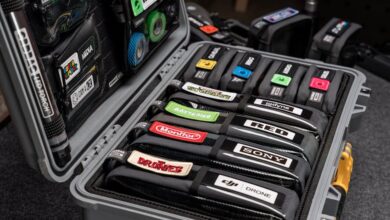The Grand Architect’s Playbook: Masayoshi Son and the Vision Fund

In the high-stakes arena of global finance, some moves aren’t just transactions; they’re seismic events that send ripples of speculation across every trading desk and boardroom. When a titan like SoftBank, led by the enigmatic Masayoshi Son, makes a significant play, the world sits up and takes notice. And few plays have stirred the pot quite like SoftBank’s recent actions concerning Nvidia.
Nvidia, the undisputed king of AI chips, has been on a meteoric rise, fueling the artificial intelligence revolution and delighting investors. Its stock performance has been nothing short of spectacular. So, when SoftBank, a long-time, high-profile investor in Nvidia through its Vision Fund, decided to trim its stake or make other adjustments, the chatter became a roar. Wall Street, ever the inquisitive beast, couldn’t help but wonder: does Son see something right now that others do not?
It’s a question that cuts to the heart of investment philosophy and market timing. Is this a shrewd move to lock in profits at a perceived peak, or a deeper signal about the future trajectory of the AI boom and broader market conditions? Let’s peel back the layers and explore the potential implications of this fascinating development.
The Grand Architect’s Playbook: Masayoshi Son and the Vision Fund
To understand the current stir, we first need to appreciate the unique nature of SoftBank and its founder, Masayoshi Son. Son isn’t your average investor; he’s a visionary with a penchant for making colossal, often contrarian, bets on technology’s future. His Vision Fund, a multi-billion-dollar behemoth, was built on the premise of identifying and backing “category kings” – companies poised to dominate their respective tech sectors.
This strategy led SoftBank to make massive investments in companies like Alibaba, ARM, and, of course, Nvidia. Son’s philosophy has always been about long-term vision, even if it sometimes involves navigating short-term volatility. He’s often spoken about the “information revolution” and the profound impact of AI, placing Nvidia squarely at the epicenter of that future for years.
SoftBank’s investment thesis for Nvidia was clear: superior technology, unparalleled market position in a burgeoning field, and a leadership team capable of executing on an ambitious roadmap. For a long time, Nvidia was considered one of the crown jewels in the Vision Fund’s diverse, yet strategically focused, portfolio. This history makes any significant shift in their Nvidia position all the more intriguing.
Unpacking the Nvidia Divestment: More Than Just Profit-Taking?
On the surface, SoftBank’s decision to adjust its Nvidia holdings could easily be dismissed as simple profit-taking. After all, Nvidia’s stock has surged dramatically over the past couple of years, driven by the insatiable demand for its GPUs in AI data centers. Any investor, regardless of their long-term vision, would be tempted to realize some gains after such a run.
However, with Masayoshi Son, things are rarely that simple. His track record suggests a more intricate calculus. While securing profits is a valid and often prudent financial strategy, the timing and context of such a move from an investor known for his conviction warrant a closer look. Is this a sign that SoftBank believes Nvidia’s valuation has become stretched, perhaps reaching an unsustainable level relative to its future growth prospects?
The AI Golden Age and Nvidia’s Dominance
It’s hard to overstate Nvidia’s current position. Its CUDA platform and powerful GPUs are the backbone of virtually every major AI development, from large language models to autonomous driving. Competitors are emerging, but Nvidia’s ecosystem dominance remains largely unchallenged for now. The ongoing AI boom has translated directly into record revenues and profits for the company, and analysts continue to project strong growth.
This makes the divestment particularly puzzling for many. Why would SoftBank, a firm that has consistently championed the AI revolution and invested heavily in its foundational technologies, choose to scale back its position in one of the most critical enablers of that revolution, precisely when it seems to be hitting its stride? It’s like selling your gold during a gold rush – unless you know something about the gold mine that others don’t.
Reading Between the Lines: What Signals is SoftBank Sending?
This brings us back to the central question: what could Masayoshi Son possibly see that the rest of Wall Street might be missing? There are several compelling theories circulating, each offering a different lens through which to interpret SoftBank’s actions.
One perspective is that SoftBank is engaging in strategic de-risking and capital reallocation. After a period of aggressive investments and some high-profile missteps (like WeWork), Son might be prioritizing balance sheet strength and flexibility. Selling a highly liquid, highly valued asset like Nvidia could free up significant capital for new investments in emerging tech sectors, shoring up existing portfolio companies, or simply improving SoftBank’s financial resilience against potential macroeconomic headwinds. Perhaps they’ve identified the *next* Nvidia, and need capital to pursue it.
Another theory suggests that SoftBank genuinely believes Nvidia’s current valuation has peaked or is due for a significant correction. While the AI narrative is strong, market exuberance can sometimes outpace fundamentals. Son, with his long history of market observations, might be anticipating a slowdown in AI spending growth, increased competition, or broader market volatility that could impact Nvidia disproportionately. It’s a bold call to make, especially when the AI fervor is at its zenith.
The Ghost of WeWork and Past Lessons
We cannot ignore SoftBank’s past experiences. The dramatic rise and fall of WeWork served as a painful, public lesson in valuation and due diligence. While Nvidia is a fundamentally different company, that experience might have instilled a newfound caution in SoftBank’s investment approach. It could be a signal of a more disciplined, less purely speculative strategy, even for their most successful holdings.
Lastly, it could be a subtle shift in strategic focus. While AI remains crucial, SoftBank might be redirecting its emphasis towards other areas within AI, such as robotics, biotech, or enterprise software, where they see different growth curves or less crowded investment landscapes. It’s a vast ecosystem, and identifying the next wave requires constant re-evaluation of where the greatest disruptive potential lies.
Conclusion
SoftBank’s movements with its Nvidia stake will undoubtedly continue to be a topic of intense scrutiny. Whether it’s a savvy call on market peaks, a calculated move to reallocate capital, or a more cautious stance on the broader economic landscape, only time will tell. For individual investors, SoftBank’s actions serve as a powerful reminder that even the most promising companies can be subject to re-evaluation by seasoned players.
It underscores the importance of not blindly following the herd, but rather understanding the underlying motivations and potential signals behind such high-profile decisions. While Masayoshi Son’s vision is unique, his latest play invites us all to ponder the durability of the current tech boom and where the next big opportunities might truly lie.





